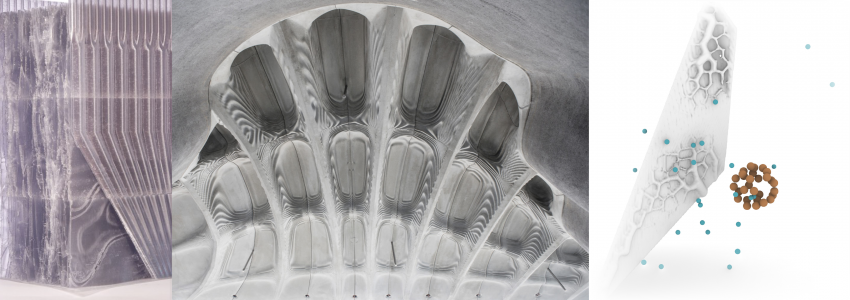project03:Main
Abstract
The increase in population results in a massive housing shortage which is now being tackled by standardized construction and its affiliated waste flows. The growing demand for housing will rise by the time of 2030, the objective is to build about a half million houses by that time. While the construction sector is responsible for 40% of material consumption and 33% of CO2 emission, there is also the importance for incorporating circular economy principles in the early design phase. These principles introduce systematic thinking towards a modular design strategy. Regarding material consumption innovative technologies in robotic manufacturing could offer possibilities for using waste as resource. The aim of this research is to achieve optimized dwellings through site, program and performance constraints. Thereafter, with the use of additive manufacturing techniques developed into a mass customizable facade panel, which integrates multiple envelope functions. In order to achieve this goal a computational approach is used in different scale levels. First focussing on the macro level, integrating view and solar radiation into a bounding box containing site values. Secondly, the program is fitted in this optimized geometry and evaluated at the meso scale. The computational strategy here involves functional adjacencies and daylight optimization. Lastly materiality and production is the focus on the micro scale. The incorporation of multiple envelope functions are simulated and assessed in a prototype, focussing on integrating structural optimization and thermal performance simulations. Furthermore, physical testing of fire resistance and incorporate movable liquid thermal mass, stresses the importance of an additive manufactured prototype. Through researching the possibility of integrating multiple functions in a building component a computational and performative design approach will be the leading strategy in order to achieve optimized architecture.
